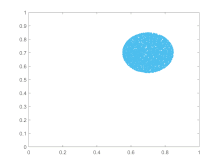The essence of chaos starts with the initial condition of a given process. Seems there are fundamental questions regarding the chaotic universe because assigning a timeframe of 13.7 billion to define the lifetime of existence appears arbitrary at best, especially when researchers are beginning to question this notion based on the evidence presented by the universe itself.
Where did all this come from? In every direction we care to observe, we find stars, galaxies, clouds of gas and dust, tenuous plasmas, and radiation spanning the gamut of wavelengths: from radio to infrared to visible light to gamma rays. No matter where or how we look at the universe, it’s full of matter and energy absolutely everywhere and at all times. And yet, it’s only natural to assume that it all came from somewhere. If you want to know the answer to the biggest question of all — the question of our cosmic origins — you have to pose the question to the universe itself, and listen to what it tells you.




No comments:
Post a Comment